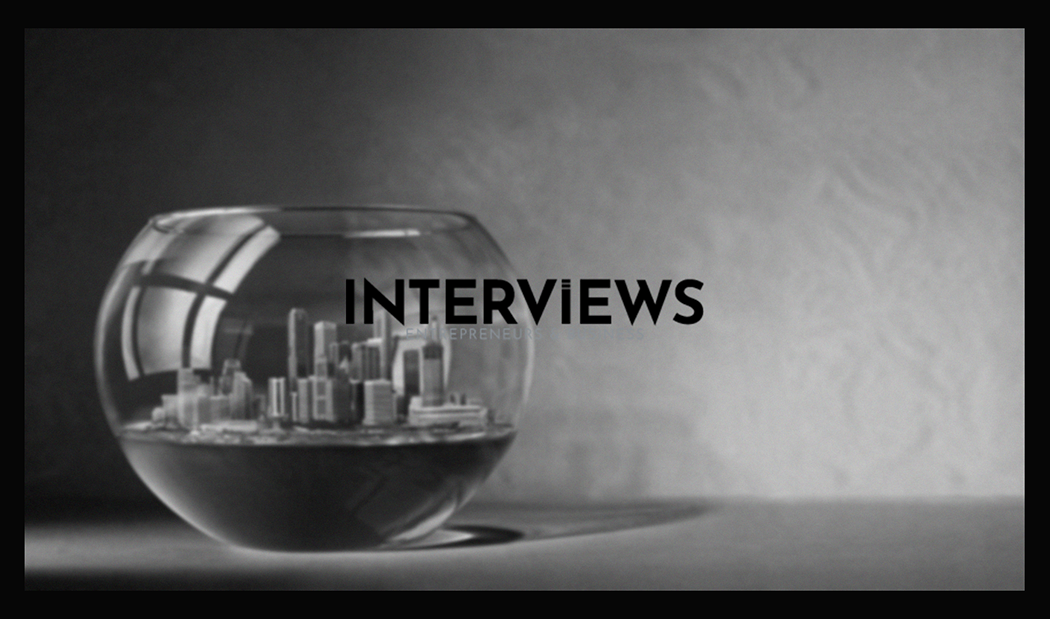Dive into the Chilly World of Ice Machine Business: Is it the Cold Hard Cash You’re Looking For?
Do you want to start a cool business? Have you thought about selling ice? The ice machine business is often overlooked. It can be a solid opportunity. Ice’s demand is constant. It is essential for drinks and seafood. So, is there money to be made? Let’s explore profitability, costs, and how to begin.
Profitability and Income: Breaking the Ice on Earnings
Let’s discuss potential profits. The ice machine business is profitable. Many need ice. Businesses, events, and individuals need ice daily. For entrepreneurs, ice machines can be a lucrative venture.
Let’s review the numbers. A single well-placed ice vending machine can earn from $22,047 to $107,348 per year. Yes, that’s impressive. The right location matters greatly. We’ll touch on site selection soon.
Profit margins are enticing. Ice production can yield profit margins from 50% to over 80%. Think about it. For every dollar spent on ice, you keep 50 to 80 cents. Traditional businesses envy such margins. You can transform water into a profitable product.
The term “passive income” gets thrown around often. But with ice machines, there’s truth to it. You can earn $20,000 to $40,000 from one machine while living your life. If set up properly, the machine generates income while you do other activities.
The profitability timeline is quick. Some have reported profits in two months. That’s fast in business terms. It’s not a get-rich-quick scheme. But it can yield profits rapidly, which sounds appealing.
Costs and Expenses: The Chilly Truth About Outgoings
Next, let’s focus on costs. Starting a business has expenses, and the ice machine business is no exception. Knowing the costs is vital to maintain profit margins.
You need a commercial ice machine. These are not kitchen models. An industrial ice machine can cost between $1,000 and $4,500. Price varies based on capacity and features. Consider this as an investment for your business.
Next comes maintenance. Ice machines require care. Annual maintenance costs range from $200 to $600. Repairs can run from hundreds to thousands of dollars for major issues. Treat maintenance as preventive care and repairs as emergency fixes.
- Cleaning and Sanitizing: Vital for hygiene. Cleaning visits average around $250. Nobody wants dirty ice.
- Filters: Water filters keep ice clean. Replace them twice yearly at $15 to $100. Affordable for quality assurance.
- Preventive Maintenance: Regular check-ups cost around $300. Worth it to avert costly disasters.
Repairs are common but unwanted. Specific ice machine issues may require different costs:
- Water Supply Issues: Clogged filters might cost $200 to $400 to fix.
- Control Board Glitches: A faulty control board can run you $500 to $800.
- Compressor Catastrophes: A failed compressor might cost $1,000 to $1,500 to repair.
Operating costs include monthly expenses for water and electricity. Running a commercial ice machine costs $20 to $70 monthly. Water can add another $20 to $50.
Then come the hidden costs. These may catch you off guard. Maintenance costs can feel unexpected but are essential. Average repair costs might exceed $700 and surprise you if unprepared. Professional cleaning ranges from $182 to $272 for thorough service.
Starting an Ice Machine Business: From Frosty Idea to Frozen Assets
Are you still interested in the ice machine business? Let’s discuss starting steps. It requires planning and effort but isn’t overly complex. Here’s your plan:
- Business Planning & Legal Ice-Breaking: Establish your business foundation.
- Develop a Business Plan: It’s important. Outline your target market, pricing strategy, operations, and financial projections.
- Choose a Business Structure: LLC or sole proprietorship? An LLC offers protection and potentially tax benefits.
- Obtain Necessary Permits and Licenses: Essential bureaucratic steps include business licenses and health permits.
- Secure Funding: Determine how you will finance the start-up costs.
- Insurance: Get liability insurance to protect against unforeseen events.
- Location & Equipment Acquisition: Picking the right spot is crucial.
- Choose a Prime Location: Visibility in high-traffic areas boosts sales potential.
- ice in the Arctic – location matters.
- Purchase or Lease an Ice Machine: Buy or rent? Research ice machines to find one that suits your budget and estimated demand. Consider used machines to lower costs, or leasing for lower initial payments and fixed monthly rates.
- Consider Financing Options: Short on cash? Look into financing or leasing options for your ice machine. It helps manage cash flow. Get started quicker this way.
- Operations & Marketing: Keep ice flowing and customers coming.
- Develop an Operational Plan: How will you control ice production, storage, and distribution? Will you hire staff? Will deliveries be necessary if you grow beyond vending? Consider daily operations. Smooth functioning leads to satisfied customers.
- Create a Marketing Strategy: Ice needs marketing too! Advertise your business to potential buyers. Use local ads, social media (quirky ice-themed posts), and partnerships with locals. Get creative. Show people where to find the best ice.
- Establish a Pricing Strategy: What will you charge for ice? Research competitor prices nearby. Find a balance that is competitive yet profitable. Avoid underselling or overpricing yourself.
- Consider Customer Service: Customer service is important in vending. Ensure machines are clean, functional, and easy to operate. Respond quickly to issues. Happy clients return, even for ice.
- Additional Considerations: Helpful tips.
- Consider a Business Partner: Going solo can be hard, especially with limited capital. A partner can bring extra resources, experience, or moral support. Choose wisely – you don’t want a partnership that feels colder than your ice.
- Learn from Others: Don’t start from scratch. Study successful ice vending operations. Learn from their ups and downs. There is a community of ice entrepreneurs out there.
- Be Prepared for Challenges: Every business faces obstacles. Equipment failures, seasonal demand changes, high competition – be ready to tackle these issues. Resilience is critical during tough times.
Ice Machine Types and Production: Not All Ice is Created Equal
A vast world of ice types and machines exists. It’s more than just water in a freezer. Let’s explore the details.
- Ice Production Capacity: How much ice can these machines produce?
- Small Machines: Undercounter or countertop models work well for smaller businesses. They can produce as little as 50 lbs of ice daily. Good for small cafes or offices.
- Large Machines: Large 48″ wide modular units can generate 2500 to 3400 lbs of ice per day. Ideal for big restaurants, hotels, or dedicated ice vending operations. These are the major players in the ice industry.
- Types of Ice Machines: Ice comes in various forms today.
- Air-Cooled vs. Water-Cooled vs. Remote-Cooled: These are primary cooling methods. Air-cooled use fans to remove heat. Water-cooled machines use water to cool down (with more water waste). Remote-cooled have their condenser outside to reduce indoor noise and heat. Each has pros and cons regarding cost, efficiency, and water use.
- The Price of Fancy Ice: Wondering why nugget ice or pearl ice machines cost more? It’s due to engineering! Unique ice types need complex mechanisms and higher-quality materials for efficient production. Think basic cubed ice versus premium, gourmet ice. Both markets exist, but premium is more costly to make.
Maintenance and Cleaning: Hygiene is King (or Queen) in the Ice Kingdom
Let’s discuss the less glamorous but crucial part: cleaning and maintenance. Dirty ice is a disaster.
- Strict Cleaning is Non-Negotiable: Dirty ice spreads diseases fast. It can ruin your business’s reputation quickly. Commercial machines require strict daily cleaning. Daily cleaning matters. Treat it like brushing teeth, but it’s for your business’s health.
- The Grim Realities of Neglect: Mold, rust, dirt, and slime can crash your ice party if you neglect cleaning. Sometimes, even pests show up. No one wants bugs in their drink. Regular cleaning avoids these unpleasant surprises.
- Not Set-and-Forget Appliances: Ice machines need care, unlike magical boxes. They require regular maintenance and attention. Ignoring them is like ignoring a car’s oil change – it leads to costly issues down the road. Unseen problems can become very expensive if ignored.
Buying vs. Leasing: The Ownership Dilemma
Your big decision: buy or lease an ice machine? Let’s compare the options.
- Leasing Perks: A clear monthly payment is a major advantage of leasing. You know exactly what you’re paying monthly. This helps with budgeting, especially when starting out. It’s like renting an apartment versus owning a home – lower upfront expenses but no ownership.
- Leasing Costs: Renting an ice machine typically ranges from $100 to $500 monthly, depending on type, lease length, and leasing firm. Leasing can cost more than buying over time, but it helps cash flow initially.
Factors Influencing Profit: Turning Up the Heat on Earnings
Maximize your ice machine’s profit potential by considering several factors.
- Machine Choice, Location, and Pricing: These are key to profitability. The type of machine (features, capacity), its location (traffic, demographic appeal), and your prices (competitive yet profitable) are all crucial for profits. Get them right for optimal positioning.
- Land Rental Fees: If your machine is on another’s property, you’ll face land rental costs. These can impact your profits, so negotiate wisely and include them in pricing decisions. Don’t let rent hinder your earnings.
- Pricing Power: You set the price for your ice. Typical prices fall between $1.50 to $3 per bag, varying by location and market forces. Research local rates, evaluate your costs, and pinpoint your maximum profit price point.
Vending Machines (Comparison): Ice vs. the Competition
How does the ice vending business compare to other vending options?
- Bulk Vending Supremacy: Believe it or not, bulk vending machines (think candy dispensers) usually lead in earning potential among vending types. They’re simple, affordable, and unexpected moneymakers.
- Lower Entry Cost for Bulk: Bulk vending machines average around $500 to buy, much less than several thousand for an ice machine. The initial investment is considerably lower.
- Revenue per Machine: A standard vending machine generates approximately $300 to $600 gross revenue per month. Actual figures vary greatly based on location, product choice, and machine type.
- Net Profit Nuances: After deducting costs of goods (candies, toys) and operating expenses, a typical vending machine sees a net profit of about $100 to $300 monthly per machine. While less lucrative than ice machines, it still offers solid supplementary income for many.
Issues and Problems: Thawing Out Potential Headaches
No business is without challenges. Ice machines may seem simple but they have issues too.
- Common Culprits: Frequently blocked water fill tubes and water inlet valves can cause problems. Dirty or clogged filters need attention too. Regular maintenance helps prevent these issues from arising from the start.
Machine Lifespan: How Long Will the Ice Age Last?
Longevity is key. Your expectation for lifespan varies based on usage and care.
out the cold?
- Proper Care = Longer Life: With cleaning and maintenance, a quality ice machine can last 4 to 5 years, sometimes longer. Treat it well, and it serves you longer. Neglect it, and it’ll retire early and expensively.
- Brand, Water, and Maintenance Matter: A good commercial ice machine lasts from 7 to 10 years or more. Factors like brand quality, local water quality, ambient conditions, and maintenance play a role in lifespan.
Electricity Usage: Powering the Ice Factory
Energy costs are a consideration for any appliance, especially an ice machine. Let’s look at power consumption.
- Power Demands by Size: Larger machines need more electricity. Machines producing 800-1200 lbs of ice daily typically need a 20-amp, 220v outlet. Machines over 1200 lbs require a 30-amp, 220v outlet. Ensure your location meets electrical needs.
- Portable Ice Makers: Efficient Sippers: Smaller ice makers are energy-efficient. They won’t spike your bill much. Good for homes but not suitable for large vending businesses.
Health and Safety: Keeping it Clean and Compliant
Health and safety are paramount when dealing with consumables.
- Listeria Lurks: Listeria monocytogenes can grow in cold environments and has been found in ice machines. Regular cleaning and sanitizing are crucial. Nobody wants Listeria in their lemonade.
- Plumbing Pitfalls: Poor plumbing installation can compromise machine function and create problems. Ensure professionals install plumbing to avoid headaches and health issues.
Sizing and Selection: Right-Sizing Your Ice Output
Choosing the right size ice machine is crucial. You need to meet demand without overspending or running out at peak times.
- The 20% Buffer Rule: Choose an ice maker that produces about 20% more ice than your estimated daily needs. This helps during unexpected surges in demand. Better to have some extra than run out when busy.
- Restaurant Ice Math: For restaurants, plan for about 1.5 pounds of ice per guest. This varies based on menu and customer habits, but it’s a useful metric.
- Café Ice Example: A café serving 100 people needs an ice machine that makes around 300 pounds of ice daily. That’s 1.5 pounds per guest times 100 guests plus the 20% buffer – simple math for success.
Related Businesses: Branching Out Beyond Cubes
The ice world opens doors to related ventures.
- Shaved Ice Side Hustle (or Main Hustle): Shaved ice businesses can be profitable and fun. Startup costs range from $10,000 to $30,000 based on setup. It’s often seasonal but can be year-round in warmer areas.
- Permits for Polar Treats: Snow cones and shaved ice are food products. Obtain the same permits as any foodservice business – health permits, business licenses, all necessary documentation. Sweet rewards can justify the paperwork.
- Italian Ice Infusion: Italian ice, a frozen dessert delight, is part of a massive $21.4 billion global industry. Adding Italian ice diversifies your offerings and increases revenue streams.
Miscellaneous Icy Insights
Here are a few extra frozen facts.
- Credit Score Considerations: Need financing? A good credit score helps. “A” lenders require a 700+ score, while “B” lenders may accept scores around 650+. Keep credit in shape for better financing options.
- Constant Water Supply: Ice machines need a consistent water supply. Ensure plumbing and water access are reliable at your location. No water means no ice, and that leads to no business.
Cost Considerations: Deep Dive into Ice Machine Expenses
Let’s revisit costs, especially those for high-end machines.
- The Pricey Perks of Premium Ice: Machines making nugget or pearl ice cost more due to complex engineering and premium materials for safe production. Gourmet ice comes at a gourmet price.
- Complex Engineering Explained: Nugget and pearl ice machines do more than freeze water. They compress ice flakes or push ice through holes to create shapes. More complexity means higher costs.
- High-Quality Materials are a Must: To ensure clear, dense, slow-melting ice, specialized materials and technologies are needed. Quality ingredients yield a quality product, even in ice.
- Commercial Grade = Higher Cost: Commercial machines, designed for large production and durability, cost more than residential models. They withstand heavy use and constant operation, which adds to the price.
So there you have it. The ice machine business, in all its glory. It’s not a quick freeze to wealth, but it can be a solid and profitable venture with quick returns and passive income. Like any business, it requires planning, effort, and the willingness to tackle challenges. If you’re seeking a business with consistent demand, strong margins, and surprising potential, maybe the ice machine business is the coolest opportunity yet unrevealed.





